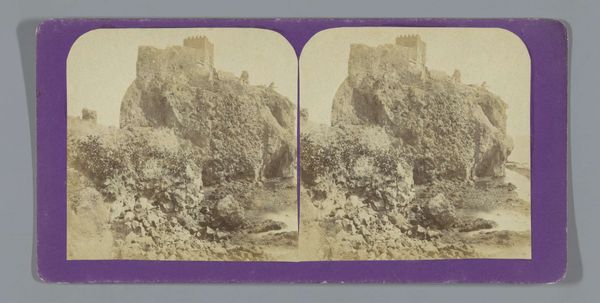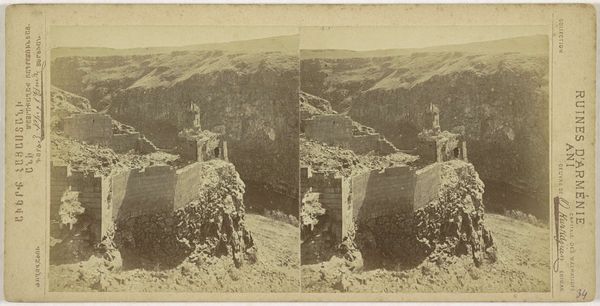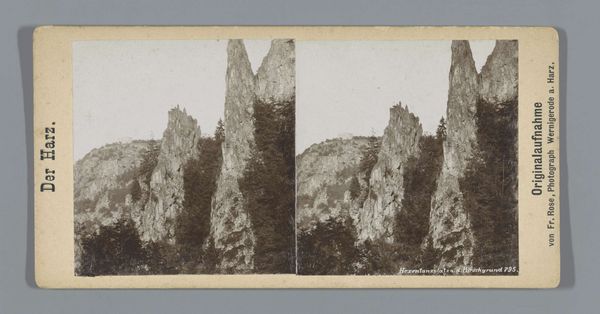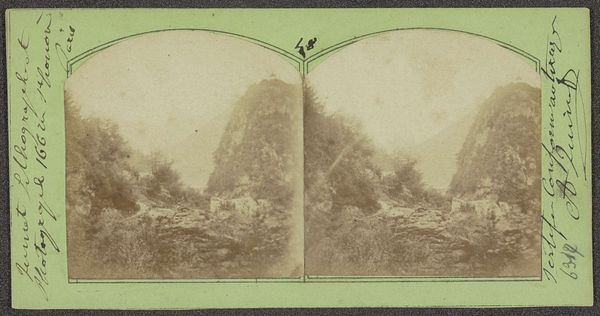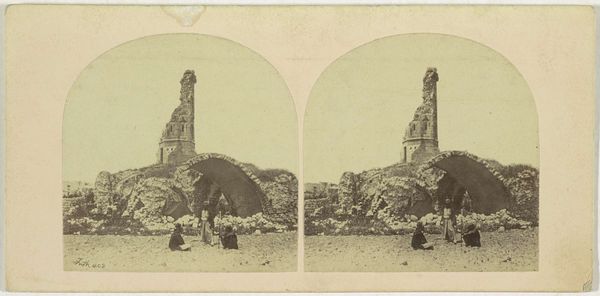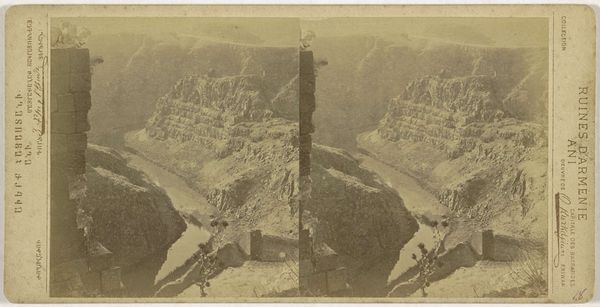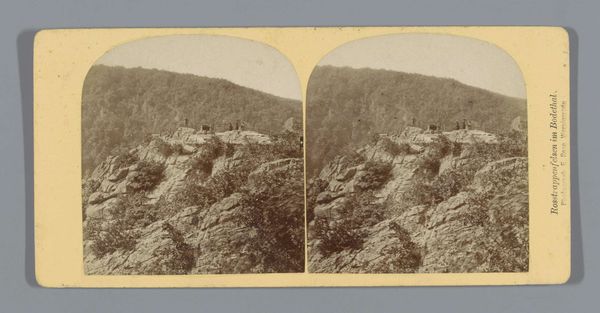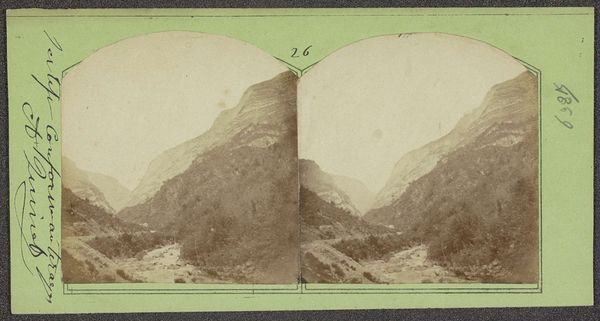
Dimensions: height 85 mm, width 170 mm
Copyright: Rijks Museum: Open Domain
This is an anonymous stereograph, most likely made in England sometime in the mid-to-late 19th century. At that time, photography’s novelty had worn off, and people were looking for new ways to make the medium interesting. Stereographs were often presented as entertainment, and this one depicts a man walking along the North Walk near Lynton, a coastal town in Devon. The town’s dramatic cliffs and ocean views made it a popular tourist destination, especially after the arrival of the railway in the late 19th century. The construction of such infrastructure shaped not only who could access particular landscapes, but also how. The placement of this walkway represents an intentional and constructed experience of nature, transforming the land into a tourist destination. To understand the photograph fully, we might want to examine tourist pamphlets, railway company records, and other ephemera of this period to see how places like Lynton were promoted and experienced by the burgeoning middle class. This stereograph, then, is a record of how tourism shapes our relationship to nature.
Comments
No comments
Be the first to comment and join the conversation on the ultimate creative platform.
